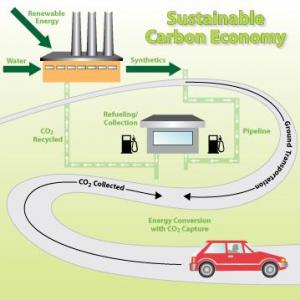
Researchers at the Georgia Institute of Technology have developed a strategy to capture, store and even recycle carbon from vehicles, in this way keeping the carbon from finding its way from the car to the atmosphere. In their vision, a car with zero emissions and completely free of fossil fuels is really close.
Technologies that capture carbon dioxide emissions from large-scale sources such as power plants have developed greatly and made significant progress. But the thing is that nearly two-thirds of global carbon emissions are created by the small things, by vehicles and distributed industrial power generation applications.
Their goal is to create a sustainable transportation system that uses a liquid fuel and traps the carbon emission, and saves them for processing at a fueling station. It would be stored, and afterwords used as… liquid fuel. Currently, they are developing a fuel processing device whose goal is to separate the carbon and store it in the vehicle in liquid form.
“Presently, we have an unsustainable carbon-based economy with several severe limitations, including a limited supply of fossil fuels, high cost and carbon dioxide pollution,” said Andrei Fedorov, associate professor in the Woodruff School of Mechanical Engineering at Georgia Tech and a lead researcher on the project. “We wanted to create a practical and sustainable energy strategy for automobiles that could solve each of those limitations, eventually using renewable energy sources and in an environmentally conscious way.”
Overall, there has been relatively little research done in what concerns carbon capture from vehicles, but the team is confident and they underline the fact that an economically realistic strategy for processing fuel or synthetic carbon-containing liquid fuels that allows for the capture and recycling of carbon at the point of emission is very important. Just think that in the long term, it would enable a sustainable transportation system with no carbon emission! They’ve already come up with a proposed system and device to produce hydrogen and, at the same time, capture carbon emissions, so the greatest remaining challenge for them is developing a method for making a synthetic liquid fuel from just CO2 and water using renewable energy sources; and they say they already have some ideas! We’ll just have to wait and see









